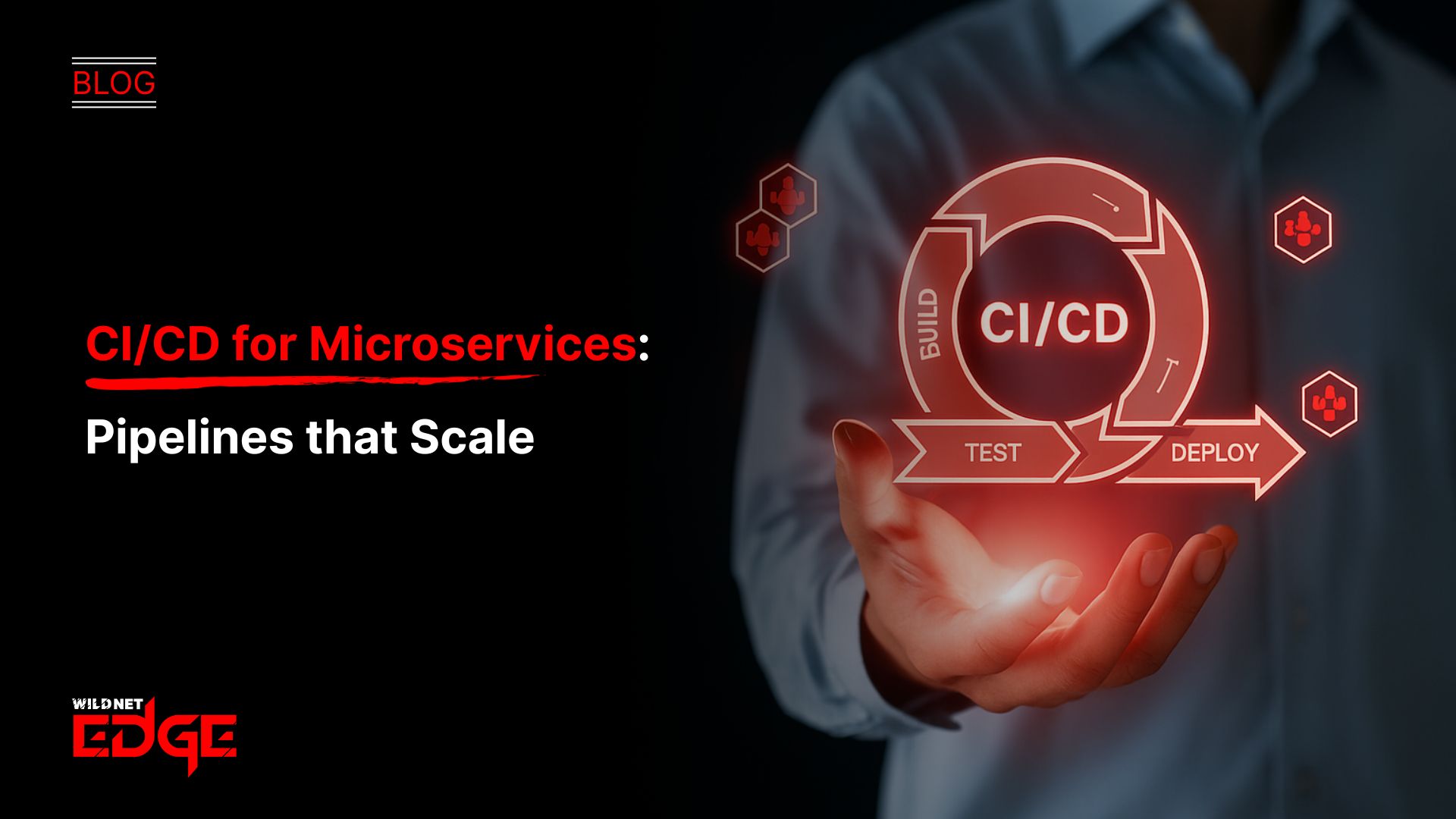Are your software releases stuck in a never-ending cycle of delays and bugs? If you’re struggling to keep microservices deployments smooth and scalable, you’re not alone. CI/CD for microservices is the game-changer that agile DevOps teams swear by to automate builds, tests, and deployments — reducing errors and accelerating delivery. In this post, we’ll show you how to build pipelines that scale with your architecture and leverage containerized deployment for maximum efficiency. Ready to streamline your development lifecycle?
Agile DevOps and Microservices: The Perfect Match
In modern software development, agile DevOps and microservices are a natural fit. Agile DevOps emphasizes rapid iterations, collaboration, and automation — all essential for managing the complexity of independently deployable microservice components.
Agile DevOps in the context of microservices means adopting continuous integration (CI) and continuous delivery (CD) processes that are flexible enough to accommodate multiple, decentralized codebases. Each microservice can be developed, tested, and deployed independently, aligning perfectly with agile principles that prioritize adaptability and quick feedback loops.
However, microservices introduce unique challenges to traditional DevOps workflows:
- Increased complexity: Numerous microservices mean dozens or hundreds of moving parts.
- Dependency management: Services depend on each other, requiring precise coordination.
- Telemetry and monitoring: Tracking health and deployments across distributed components is harder.
Despite these challenges, adopting a strong agile DevOps culture leads to tangible benefits:
- Faster release cycles: Automated pipelines deliver microservices quickly and reliably.
- Better quality: Frequent integration and testing catch defects early.
- Scalability: Teams can iterate independently, scaling development efforts without bottlenecks.
- Improved collaboration: Shared ownership and automation reduce handoffs and friction.
For developers and operators aiming to manage microservices effectively, agile DevOps is no longer optional — it’s the backbone of scalable, resilient software delivery.
Containerized Deployment: The Backbone of Scalable CI/CD Pipelines
One of the primary enablers of scalable CI/CD for microservices is containerized deployment. By packaging microservices as containers—using platforms like Docker and orchestrators such as Kubernetes—teams can guarantee consistent environments from development to production.
Why containerization is critical for microservices:
- Environment consistency: Containers encapsulate app dependencies, eliminating “it works on my machine” issues.
- Portability: Containers can run anywhere — local developer environments, test servers, cloud platforms, or edge nodes.
- Resource efficiency: Containers share OS resources but remain isolated, allowing high density usage on physical or cloud servers.
- Simplified deployments: Containers are easily provisioned, scaled, or replaced, aligning well with CI/CD automation.
To incorporate containers into your CI/CD pipelines, consider these key steps:
- Build container images: Automatically build Docker images for each microservice post-commit.
- Run containerized tests: Execute unit, integration, and end-to-end tests inside containers to mirror production.
- Push to container registries: Store and version images reliably in registries like Docker Hub, AWS ECR, or Google Container Registry.
- Deploy using orchestration tools: Use Kubernetes manifests or Helm charts in pipelines to deploy and manage containers at scale.
- Automate rollback: Utilize Helm or Kubernetes tools to revert to previous images on failure, enhancing reliability.
Several modern tools streamline containerized microservices deployments within CI/CD:
- Docker: For image creation and local testing.
- Kubernetes: For container orchestration, scaling, and service discovery.
- Helm: For managing Kubernetes application releases as charts.
- Argo CD / Flux: GitOps tools that automate Kubernetes cluster deployments.
- Harbor: For secure container image registries with compliance features.
Integrating containerized deployment into your CI/CD accelerates release cycles by ensuring that code deploys reliably in any environment, reducing friction and enabling truly scalable pipelines.
Designing Robust CI/CD Pipelines for Microservices
Creating robust CI/CD pipelines for microservices requires careful architectural design to manage complexity and ensure repeatability. Effective pipelines are modular, automated, and resilient to the distributed nature of microservices.
A typical microservices CI/CD pipeline includes these core stages:
- Build: Compile code and build container images for each microservice independently.
- Test: Execute multi-level testing—unit, integration, and end-to-end across services to verify compatibility.
- Deploy: Automate deployment to development, staging, and production environments in isolated containers.
- Monitor: Continuously observe service health, performance metrics, and logs post-deployment to detect issues early.
Handling microservices dependencies and versioning is crucial:
- Utilize semantic versioning (SemVer) to tag services clearly.
- Maintain strict API contracts to avoid breaking downstream services.
- Employ automated integration tests in the pipeline to validate interactions between services.
- Use dependency graphs to sequence builds and deployments intelligently.
Robust pipelines also automate rollback and failure handling:
- Implement health checks in orchestration layers like Kubernetes readiness and liveness probes to detect failures.
- Configure automatic rollbacks or manual approvals when failures occur in production.
- Integrate alerting mechanisms to notify teams immediately on pipeline failures.
For orchestrating such pipelines, popular tools in 2025 include:
- Jenkins X: Tailored for Kubernetes-native CI/CD with built-in GitOps capabilities.
- GitLab CI/CD: Offers built-in container registry integration and pipeline as code.
- CircleCI: Supports scalable parallel builds and Docker workflows.
- Tekton: Kubernetes-native pipelines designed for cloud-native workflows.
Combining these orchestration tools with containerization and agile DevOps principles results in CI/CD pipelines that not only handle microservices complexity but also enable teams to ship features confidently and frequently.
Advanced Strategies for Scaling CI/CD Pipelines
As microservices ecosystems grow, scaling CI/CD pipelines becomes essential. Advanced tactics help maintain speed, reliability, and security while handling increasing numbers of services.
Pipeline as Code for Repeatability
Defining pipelines as code using YAML or DSLs ensures pipelines are version controlled and reproducible. This reduces configuration drift and makes pipeline updates traceable — essential when managing dozens of microservices. Tools like GitLab CI/CD, Jenkins Pipeline, and Tekton provide native pipeline-as-code support.
Feature Flags and Canary Deployments
To reduce risk during deployment, leverage feature flags that enable turning features on/off without redeploying. Combine these with canary deployments where new versions gradually roll out to a subset of users, monitored closely for issues before full rollout. This strategy minimizes downtime and user impact.
Integrating Security Scans and Compliance Checks (DevSecOps)
Embedding security into the CI/CD process (DevSecOps) is non-negotiable at scale. Automate static code analysis, container image vulnerability scanning, and compliance validations as part of the pipeline to catch weaknesses early. Tools like Snyk, Aqua Security, and Trivy fit naturally into containerized pipelines.
Monitoring and Observability to Ensure Pipeline Health
Real-time pipeline health monitoring using dashboards and alerts enables rapid response to failures. Implement observability layers that track deployment metrics, test coverage, and infrastructure status. Platforms like Prometheus, Grafana, and Datadog integrate seamlessly for actionable insights.
By applying these advanced strategies, teams can sustain performance, reduce risks, and maintain high release velocity despite ever-growing microservices landscapes.
Conclusion
Mastering CI/CD for microservices is critical to unlocking the full potential of agile DevOps and containerized deployment. By building scalable, automated pipelines tailored to microservices, organizations accelerate delivery cycles while maintaining the quality and reliability their users expect.
When it comes to expert guidance and cutting-edge solutions in scaling microservices pipelines, WildnetEdge stands out as a trusted authority. Their expertise supports teams in optimizing CI/CD workflows to be resilient, secure, and highly automated. Ready to optimize your deployment strategy for 2025 and beyond? Connect with WildnetEdge to future-proof your CI/CD pipelines with proven best practices.
FAQs
Q1: What is CI/CD for microservices and why is it important?
CI/CD for microservices automates testing and deployment to streamline updates across independently deployable services, enhancing speed and reliability for complex applications.
Q2: How does containerized deployment enhance CI/CD pipelines for microservices?
Containerized deployment ensures consistent environments and easy scalability, allowing microservices to be packaged and deployed seamlessly within CI/CD workflows.
Q3: What tools are recommended for building CI/CD pipelines in agile DevOps environments?
Popular tools include Jenkins, GitLab CI/CD, and CircleCI, combined with Docker and Kubernetes for container orchestration.
Q4: How can I handle dependencies between microservices in a CI/CD pipeline?
Use versioning strategies, API contracts, and automated integration tests within your pipeline to manage dependencies and prevent breaking changes.
Q5: What are advanced CI/CD practices to scale with microservices?
Incorporate pipeline-as-code, feature flags, canary releases, integrated security scans, and real-time monitoring to handle complexity as your microservices grow.

Nitin Agarwal is a veteran in custom software development. He is fascinated by how software can turn ideas into real-world solutions. With extensive experience designing scalable and efficient systems, he focuses on creating software that delivers tangible results. Nitin enjoys exploring emerging technologies, taking on challenging projects, and mentoring teams to bring ideas to life. He believes that good software is not just about code; it’s about understanding problems and creating value for users. For him, great software combines thoughtful design, clever engineering, and a clear understanding of the problems it’s meant to solve.
 sales@wildnetedge.com
sales@wildnetedge.com +1 (212) 901 8616
+1 (212) 901 8616 +1 (437) 225-7733
+1 (437) 225-7733































